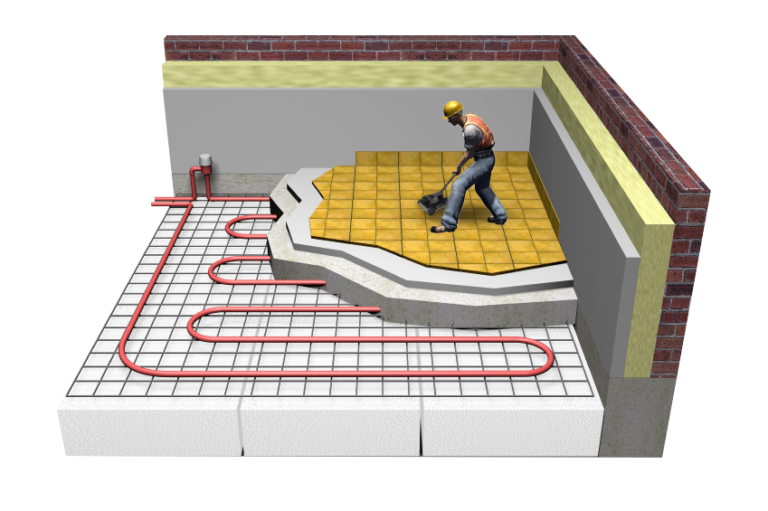RainierGPR Concrete Scanning: Innovative Solutions for Complicated Tasks
RainierGPR Concrete Scanning: Innovative Solutions for Complicated Tasks
Blog Article
Checking Out the Key Benefits of Concrete Scanning in Construction Projects
In the realm of contemporary building techniques, the utilization of concrete scanning modern technology has actually emerged as a crucial tool for ensuring job efficiency and architectural integrity. From boosting safety actions to precisely identifying utilities hidden beneath the surface area, the advantages of concrete scanning are diverse. RainierGPR Concrete Scanning.
Improved Safety And Security Steps
Making use of sophisticated concrete scanning innovation improves security procedures on building sites by supplying precise discovery of potential threats hidden underneath the surface area. This modern technology makes it possible for building and construction groups to determine rebar, channels, post-tension cables, and various other blockages before excavation or drilling, significantly reducing the danger of accidents. By identifying these aspects precisely, workers can prevent harmful important architectural components, thus stopping injuries, hold-ups, and costly repair services.
Additionally, concrete scanning plays a vital duty in making certain the stability of existing structures during developments or restorations. By finding weaknesses, spaces, or damage within concrete components, designers can attend to these issues proactively, enhancing the overall safety and long life of the structure. This proactive method not just reduces the threat of architectural failures however additionally decreases the potential for accidents brought on by unexpected architectural shortages.
In essence, the execution of concrete scanning innovation functions as an aggressive precaution that safeguards both construction workers and the architectural integrity of buildings, eventually adding to the total success and effectiveness of building projects. - RainierGPR Concrete Scanning
Accurate Discovery of Energies
Concrete scanning innovation promotes specific identification of underground energies, improving construction site safety and efficiency. Accurate discovery of energies is important in building and construction tasks to avoid costly damages, project hold-ups, and most importantly, ensure the safety and security of employees and the general public. By making use of innovative scanning innovations such as ground-penetrating radar (GPR) and electromagnetic induction, building and construction groups can map out the location of buried pipelines, cords, and other energies with high degrees of precision.
Time and Expense Efficiency

Concrete scanning modern technology makes it possible for building teams to properly locate rebar, post-tension cords, and various other embedded items within concrete structures. This specific information aids in staying clear of expensive blunders such as unexpected damage to vital components throughout exploration, reducing, or coring activities. Furthermore, by identifying prospective risks in useful reference advance, the demand for expensive repair work or remodel because of problems can be decreased, leading to cost financial savings for the task.
Moreover, the capability to quickly and accurately discover utilities underneath the surface without causing any type of damage not only conserves time yet also avoids expensive interruptions to existing framework. On the whole, the moment and price effectiveness benefits of concrete scanning make it a very useful tool for enhancing building and construction task monitoring and execution.
Preservation of Architectural Integrity
Preserving the architectural stability of structures and infrastructure is paramount in making sure long-lasting stability and security. Concrete scanning plays a crucial duty in this preservation procedure by her comment is here enabling building professionals to determine possible hazards to the structural integrity of a building or infrastructure prior to they rise into major issues. Via making use of sophisticated scanning innovations such as ground-penetrating radar (GPR) and electro-magnetic induction, building and construction groups can non-invasively evaluate the condition of concrete structures, find rebar, post-tension wires, and other ingrained components, and identify any type of gaps, cracks, or wear and tear within the concrete.
Improved Task Planning
In order to ensure the successful execution of building tasks, thorough attention to information and thorough preparation are essential parts that stem from a comprehensive understanding of the structural problems recognized through concrete scanning. Eventually, incorporating concrete scanning into the task preparation phase enhances control among group participants, fosters positive problem-solving, and adds to the successful delivery of building tasks within budget and timetable restraints.
Conclusion
To conclude, concrete scanning offers many advantages in building and construction tasks. By improving precaution, accurately finding energies, improving time and price performance, maintaining architectural integrity, and assisting in project preparation, concrete scanning shows to be an essential device for effective task execution. Its capability to mitigate threats, boost effectiveness, and make certain project honesty makes it a crucial property for building specialists.
In the world of contemporary building methods, the use of concrete scanning technology has actually arised as an essential tool for ensuring project performance and structural stability.Concrete scanning innovation makes it possible for construction groups to precisely find rebar, post-tension cable televisions, and various other ingrained things within Related Site concrete frameworks. Via the use of sophisticated scanning innovations such as ground-penetrating radar (GPR) and electro-magnetic induction, building and construction teams can non-invasively evaluate the condition of concrete frameworks, situate rebar, post-tension cable televisions, and various other embedded aspects, and determine any type of gaps, fractures, or wear and tear within the concrete.
In order to make sure the effective implementation of building jobs, meticulous focus to information and thorough planning are necessary components that stem from a thorough understanding of the architectural conditions identified through concrete scanning. Inevitably, incorporating concrete scanning into the task preparation phase improves control amongst group participants, fosters aggressive analytical, and contributes to the effective delivery of construction projects within budget and routine restraints.
Report this page